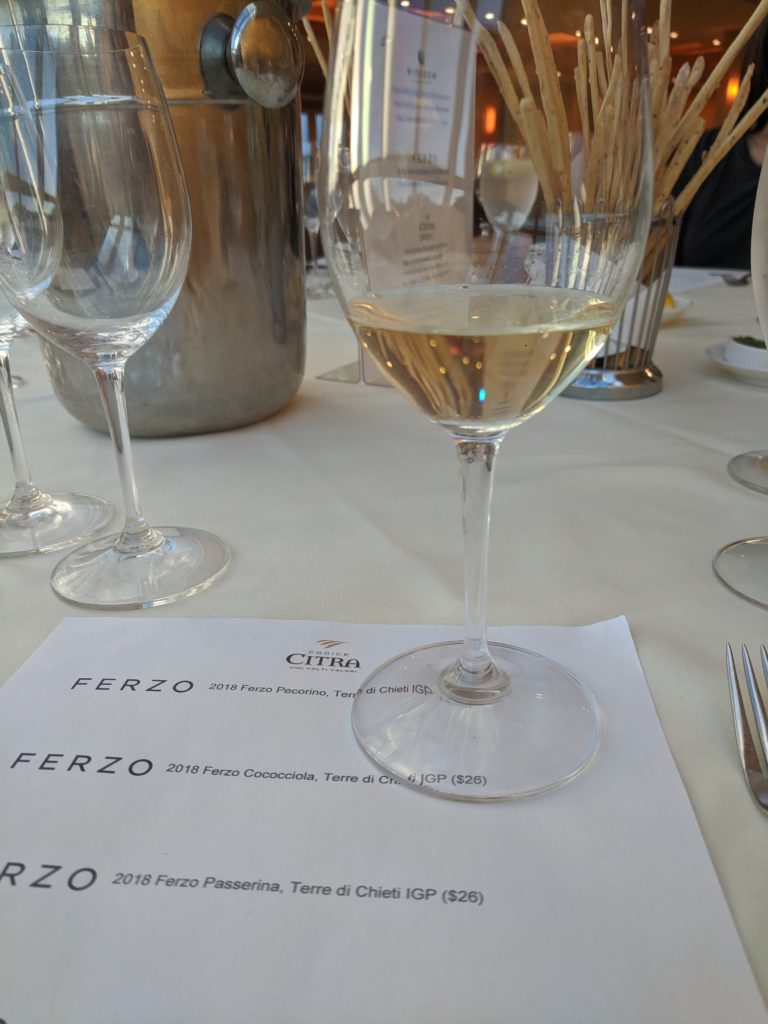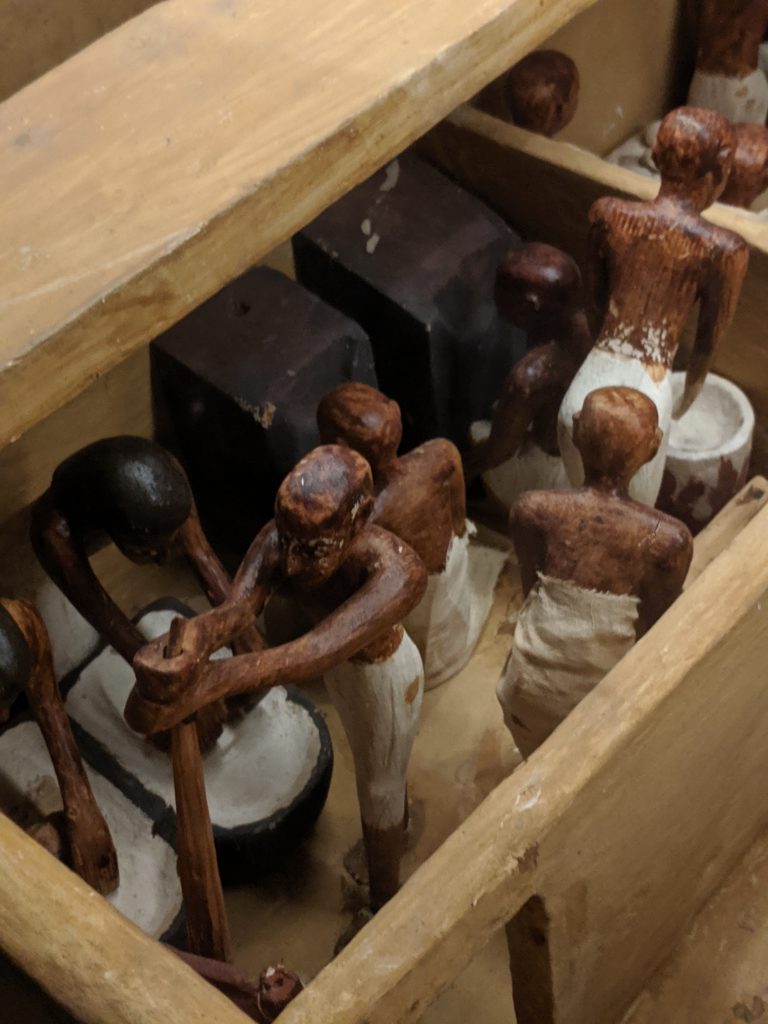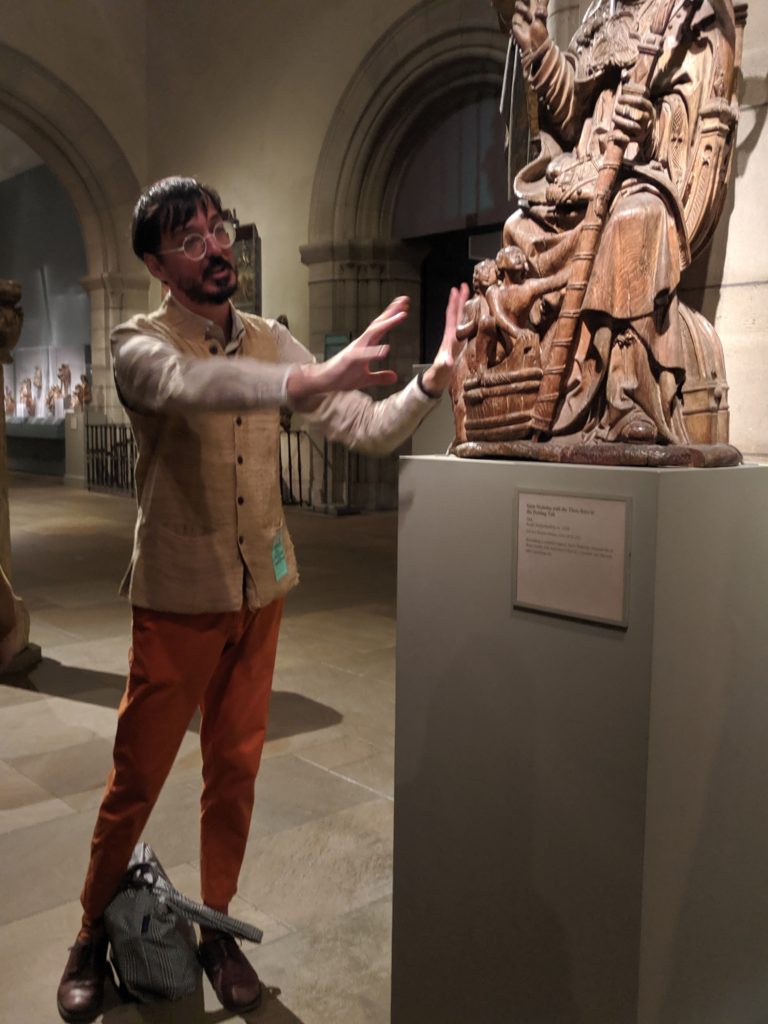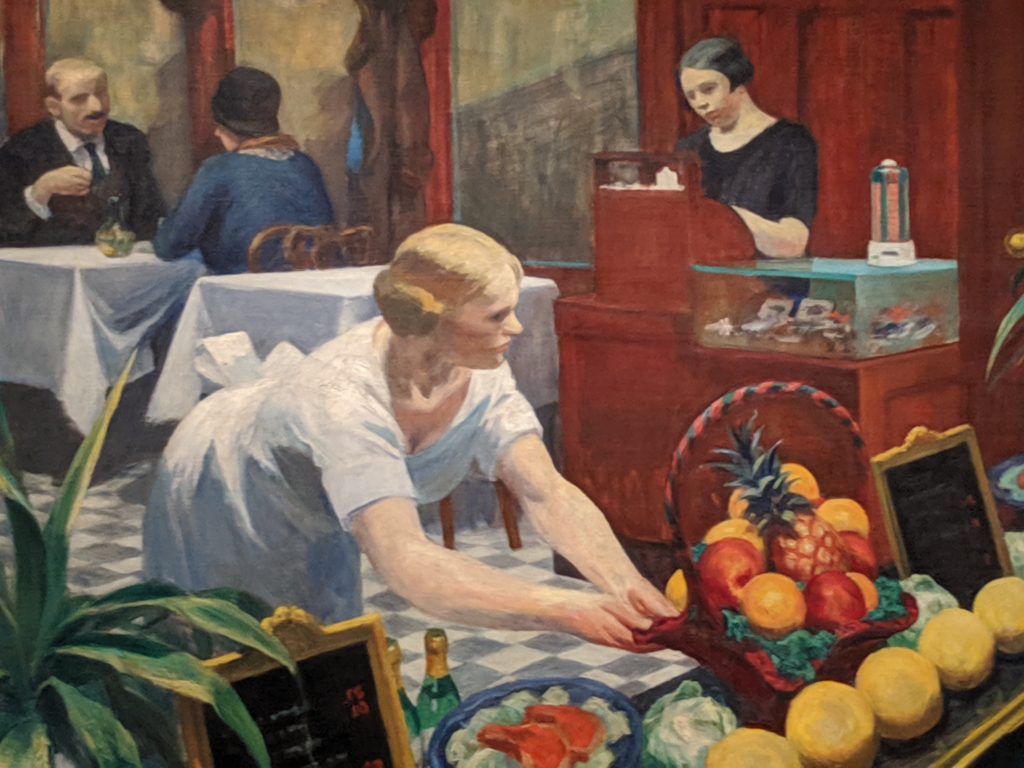I was first introduced to the new line of Ferzo wines from Codice Citra back in May. Produced from the estate-grown fruit from a collaboration of family-owned vineyards within the Chieti province of Italy’s Abruzzo region, these wines offer up great taste and value.
Specifically, the Ferzo name refers to “patches of fabric stitched together to create a sail,” and symbolizes the piecing together of numerous plots of vineyards, within the southern part of the Abruzzo region.

The Codice Citra cooperative was founded in 1973 and focuses on local grapes such as the well-known Montepulciano d’Abruzzo and Trebbiano d’Abruzzo to more esoteric varieties. In addition to the Ferzo line, which made its debut into the U.S. market earlier this year, the coop’s portfolio includes three other ranges of wines (Citra, Caroso and Las Vitae.
In an effort to introduce more members of the press to this new set of wines, the winery’s importer, Winebow, hosted an unusual event at the Metropolitan Museum of Art. Event guests were shepherded around the museum by Angelis Nannos of In Food We Trust, stopping at various works of art around the historic and vast buildings of the esteemed institution, all of which harkened back to humankind’s connection to food and beverages.
First on the “menu” was pickling during which Angelis regaled us of the story of St. Nicholas of Myra who saved three boys from being drowned in a pickling vat, one of the most ancient ways of preserving food that spans numerous cultures such as Korean kimchee and Jewish pickles.
From there, we headed to the alabaster reliefs of the Assyrian Royal Court, which recount a dinner party held for 69,000+ guests! Meanwhile, the Tomb of Mektre showcased the everyday activities of ancient Egypt including baking.
We learned about New York City’s long association with oysters as illustrated by a stunning Oyster Plate from the Union Porcelain Works and then completed our tour in front of Edward Hopper’s Tables for Ladies. This painting recalls the period of history when nice women were not permitted to dine alone until some entrepreneurial restaurateurs created women-only dining establishments, which offered “Tables for Ladies.” Here, unaccompanied women could safely enjoy a meal without tarnishing their reputations. Painted during the Depression, the painting also tells the story of shows of abundance contrasted with the stark reality of the scarcity of food during this time period.
At the conclusion of our jaunt through the museum, we headed upstairs to the dining room to enjoy some actual food and wine. Among the Ferzo line, there are three whites produced from 20 year old vines hand picked indigenous varieties, namely: Pecorino, Cococcioloa and Passerina. These three wines are all fermented in stainless steel, ensuring that the wines are fresh and fruit forward without any oak influence. A rosato (aka rose) and a Montepulciano d’Abuzzo round out the range.
Most recently, with its emphasis on Abruzzo’s viticultural history and a strong commitment to high quality wine, Codice Citra has brought on winemaker, Ricardo Cotarella as executive enologist and partnered with Leonardo LoCascio Selections, as its exclusive U.S. importer.
TASTING NOTES
Ferzo Passerina 2017, Terre di Chieti IGT, Abruzzo, Italy, $26.00
The ancient variety of Passerina is not well known, but is on the path to rediscovery, given recent interest in the grape in Abuzzo, Umbria and Le Marche (where it is produced within the Offida DOCG). This wine has a beautiful floral and fruity nose, with flavors of white flowers, juicy pineapple, pear and tropical fruit. On the palate, it offers up bright acidity, medium body and long length.
Ferzo Pecorino 2017, Terre di Chieti IGT, Abruzzo, Italy, $26.00
With the same name as the Italian word for sheep, it is now thought that this grape gets its name from the shepherds, not the sheep, who were eating these grapes when out in the mountains. Almonds, minerality and hint of pear greet the nose. On the palate, this wine is dry, with medium+ acidity, medium+ body and is quite angular. Flavors of nuts and minerals dominate, giving the wine weight and depth, before culminating in long length.
Ferzo Cococciola 2017, Terre di Chieti IGT, Abruzzo, Italy, $26.00
The Cococciola grape is cultivated in both Abruzzo and Puglia and is frequently compared to Sauvignon Blanc. This wine offered up more fruit character than the Pecorino, with more pronounced melon, pear and citrus, a hint of waxiness on the palate and just a slight note of nuttiness. It displays nice body, good depth and long length.
Caroso Montepulciano d’Abruzzo Riserva 2015 , Abruzzo, Italy, $30.00
Not to be confused with Vino Nobile di Montepulciano, this wine is produced from the Montepulciano grape, grown in the Abruzzo region. The wine was beautiful, with a rich and fragrant nose of plums, with good acidity, integrated oak, soft tannins and long length.






